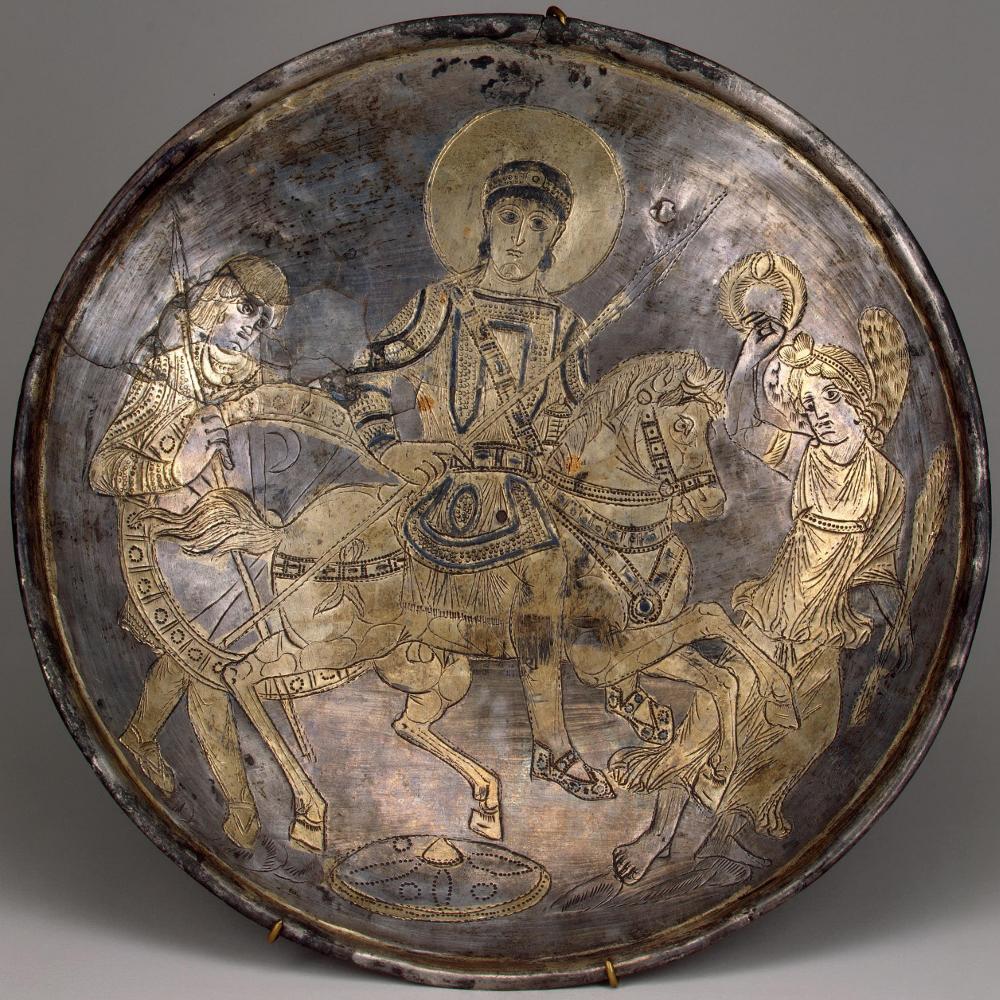Romano-Byzantine bowl with the triumph of Constantius II, 4th century, State Hermitage Museum, St Petersburg
 A larger image of this Romano-Byzantine bowl with the triumph of Constantius II, 4th century, State Hermitage Museum, St Petersburg
| |
 A larger image of this Romano-Byzantine bowl with the triumph of Constantius II, 4th century, State Hermitage Museum, St Petersburg
| |
This silver dish was a diplomatic gift from the Byzantine Emperor to a representative of the Bosporan government. In this fine example of the early Byzantine art traditional Classical themes are combined with a new artistic style. The vessel shows a composition typical of Roman coins: the Emperor on horseback is piercing the enemy with a spear. The rider was usually accompanied by one or several warriors and Nike crowning the winner. In contrast to the Classical composition showing the final scene of a battle, here we see the scene of triumph: Emperor Constantius II sits on a horse, triumphantly raising his spear. To emphasize the Emperor's highest rank and divine power, the artist used special pictorial devices including, for example, the distortion of proportions. The images were produced by a chisel. Part of the ornamentation is nielloed. The outer surface is gilded and a loop is soldered onto it.
Title: Bowl: the triumph of Constantius II
Place: Eastern Mediterranean
Date: 4th century
Found: Bosporan Necropolis, vault on the Gordikov estate. Near Kerch, the crypt in the North-Eastern Slope of Mount Mithridates, 1891
Material: silver
Technique: gilded and nielloed
Dimensions: diameter 24.9 cm; height 3.9 cm
Acquisition date: Entered the Hermitage in 1891; transferred from the Imperial Archaeological Commission; purchased from E. Zaporozhsky
Inventory Number: 1820-79
Source: State Hermitage Museum, St Petersburg